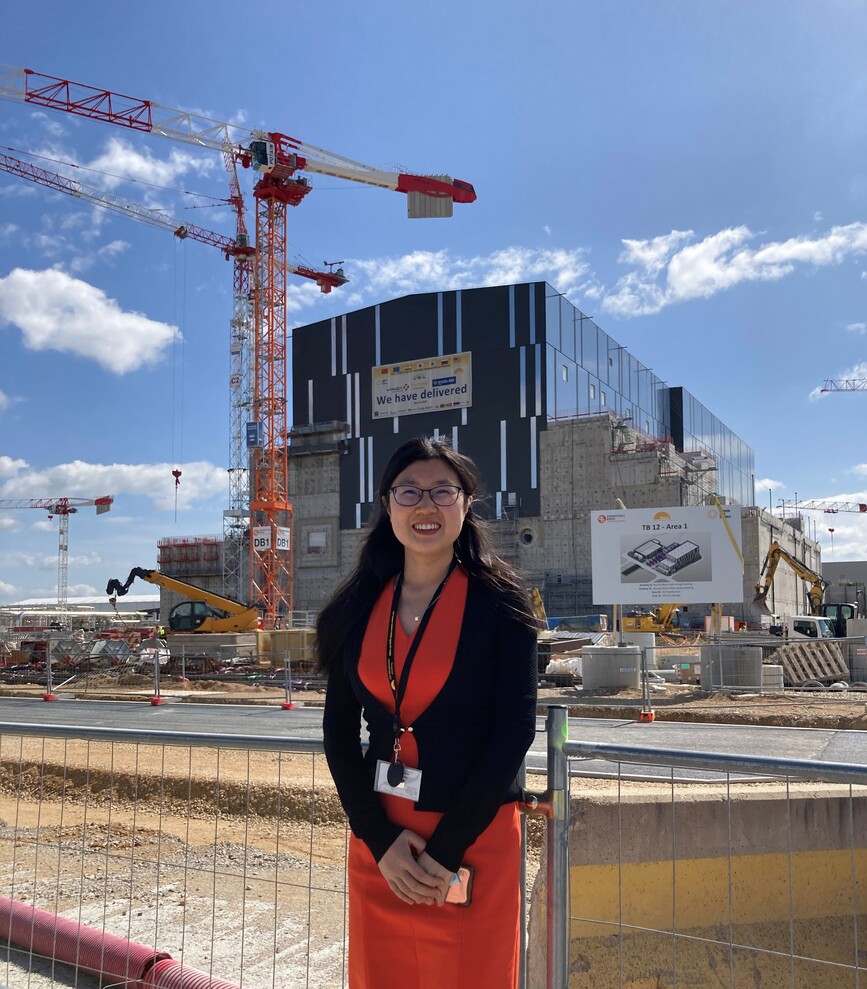When did you complete your diploma/PhD thesis?
Dissertation in Professor Michael Probst’s group (supervised by Dr. Alexander Kaiser) at the University of Innsbruck in March 2020.
What was the title of your thesis? What was it about?
During my dissertation 'Atomistic Investigations on Plasma Facing Components of Beryllium and Tungsten’, I was working on developing potential functions for atomistic modeling of beryllium, tungsten sputtering and hydrogen retention of the ITER plasma-facing surfaces via machine learning techniques. For successfully applying a neural network approach, complete and well-balanced training data is required. In this respect, I have implemented an iterative protocol that corrects the low extrapolation capabilities of neural networks by iteratively checking and improving the molecular dynamic simulations to refine the training data. The developed potential functions describing atomic interactions have been successfully applied to study the sputtering of pure beryllium and beryllium-tungsten alloy surfaces by energetic beryllium and hydrogen isotopes impacts. These neural network potentials can be used in long-time and large length-scale simulations with statistics similar to what is accessible by conventional force fields and the accuracy of expensive ab initio molecular dynamic simulations.
What fascinates you about nuclear fusion?
Fusion energy is an unlimited, carbon-free, safe and sustainable energy source. ITER success represents a major step forward towards the application of nuclear fusion to produce electricity. What fascinates me most about nuclear fusion is that we are continuing to explore new technologies day by day. There is still a lot of unknown territory waiting to be discovered.
What did you do shortly after graduation?
After defending my dissertation, I continued for six months of post-doctoral research in Professor Michael Probst’s group to finalize my Tiroler Wissenschaftsförderung (TWF) project: “Modelling the Reactions of Hydrogen Collisions with Surfaces of Beryllium, Tungsten and Their Alloys”. And then I took a post-doctoral position at the ITER Organization located in southern France. Before I moved to France, I could enjoy a two weeks hiking tour in the fascinating Tyrolian mountains.
Where do you work now and what are your tasks?
I now work as Monaco/ITER postdoctoral fellow at the ITER organization. I analyze the ITER plasma-facing components (PFC) damages induced by the high heat loads typical of unmitigated plasma instabilities such as plasma disruptions. The work is an important part of the continuing effort to refine the ITER “disruption budget”, and provides a key input for both the assessment of PFC operational lifetime and the ongoing update of the ITER Safety Files.
What are the biggest challenges?
I have changed my research topic from molecular dynamics during my dissertation to finite element modeling. I must learn several different codes and develop a multi-physics workflow to assess the melt damage to the ITER wall components induced by high energy electrons (up to 15 MeV) and high plasma heat loads in a rather short time period. Luckily, I have received tremendous help from my supervisors (Dr. Richard Pitts and Dr. Michael Lehnen).
Do you have any advice for today’s doctoral students/master students?
Hold on to yourself and try to enjoy your research. If you get too frustrated, you may take a break and do hiking, skiing, climbing… And then you may find the solution. Work and life balance are also very important.
